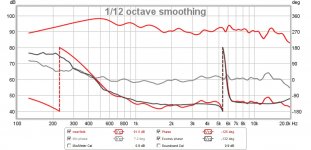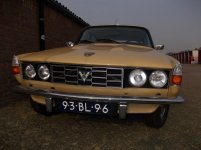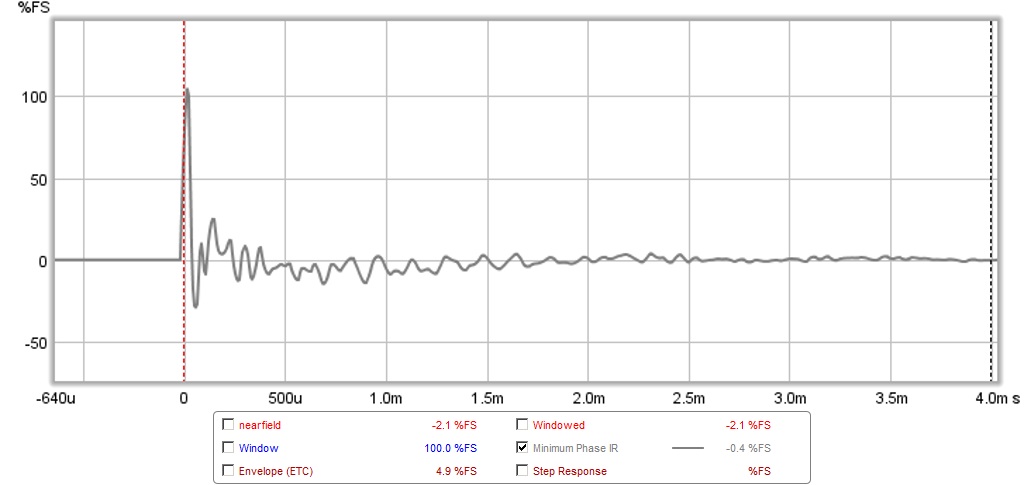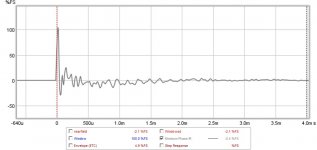Is that "real phase" or minimum phase and how was that measured? From listening position the phase usually goes totally haywire.
Legis - the file wesayso is referring to is here - http://halair.com/rew/Array-v3-iMac.mdat
Placement of mic was at listening position and the sole purpose for these measurements was to see how the arrays behave.
wesayso said:Hope Halair doesn't mind me posting this
No problem 🙂 I want to learn as much of possible on how to read mdat-data myself 🙂
Legis,
Can you walk me thru the menu and selections to do this? There are a lot of time window options - not sure if I looking at right menu or pop up.
Thanks
Click "IR Windows" and adjust the time window from "right window (ms)". Something like 3-10ms. The longer the window the lower you can see reliably. You can also use the "left window" to cut of the lower freqs by setting the same window to it as to the right window. Everything else can be left as-is.
An externally hosted image should be here but it was not working when we last tested it.
Here's the data with generated minimum phase and excess phase:

I set the IR right window to 4 ms as mentioned before.
And the normalised impulse:


I set the IR right window to 4 ms as mentioned before.
And the normalised impulse:

Last edited:
Legis - the file wesayso is referring to is here - http://halair.com/rew/Array-v3-iMac.mdat
Placement of mic was at listening position and the sole purpose for these measurements was to see how the arrays behave.
Thanks halair. The phase is very linear indeed with a short time window (<7ms). Have you calculated when all the different arrivals from different cones have reached the mic, ie. what is the difference between the closest and farthest driver in distance?
Here's some lobing/comb filtering action that also be seen by looking at the response with different time windows. It's natural for untapered line arrays that are made of separate radiators due to multiple arrivals (I take your's is untapered?). Room can also make those at lower end of spectrum. The response might also vary quite much if the mic's position is changed 3cm up or down, but usually this cannot be heard with ear/listening.
I have had 2,2m tall fullrange electrostatic speakers and 2,4m tall 8" dipole midbass line arrays (from 600Hz and down), so I also have some experience with line arrays. I like their sound, especially ESL's/stats'. 🙂

Last edited:
Thanks halair. The phase is very linear indeed with a short time window (<7ms). Have you calculated when all the different arrivals from different cones have reached the mic, ie. what is the difference between the closest and farthest driver in distance?
I can probably help with that question, although there are some small differences... here's a drawing I made before I started my own line array.
The actual C-C distance in my array is slightly different and Halair has 20 speakers, not 25 due to space limitations.

All measurements in mm
But it should provide a nice overview of the time differences between elements.
Last edited:
I can probably help with that question, although there are some small differences... here's a drawing I made before I started my own line array.
The actual C-C distance in my array is slightly different and Halair has 20 speakers, not 25 due to space limitations.
Just to add:
For my arrays C-C is 85mm. Front baffle is 115mm wide, sharp edge (so far..) No wave guide.
Speaker-Mic distance have approx 18cm variation from min/max
No tapering of the array, 5 groups in parallell where each group is 4x Vifa in series.
Room is acousticly untreated
Gated Min Phase nearfield
This was measured at 4ms gate and 12cm away with Vifa and 6.5in woofer. I think it looks good except for phase wrap at 5.6khz.
I still have not done a careful time alignment. Just set delay to equal distance from Vifa throat to injection ports plus 2 inches.
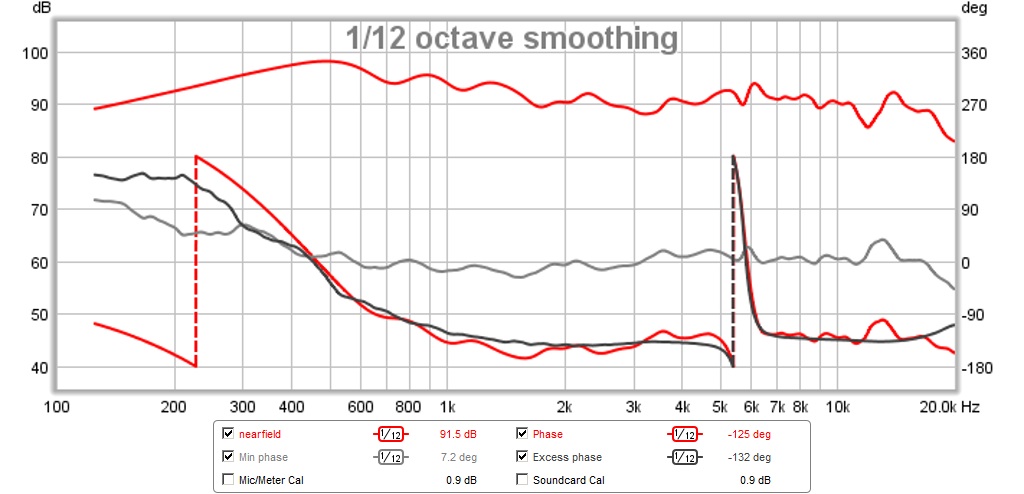
This was measured at 4ms gate and 12cm away with Vifa and 6.5in woofer. I think it looks good except for phase wrap at 5.6khz.
I still have not done a careful time alignment. Just set delay to equal distance from Vifa throat to injection ports plus 2 inches.

Attachments
Classic car?
Yes a rover P6 needs welding.
everything at once is not possible, audio in wintertime is better.
I have resim my tapped horn, when in a corner it go easely above 100dB 105 in this case, minus 3 dB is 102 dB real because of 4 ohms woofer.
One tapped horn do fine with two synergy tractrix of conic.
regards
kees
Attachments
Click "IR Windows" and adjust the time window from "right window (ms)". Something like 3-10ms. The longer the window the lower you can see reliably. You can also use the "left window" to cut of the lower freqs by setting the same window to it as to the right window. Everything else can be left as-is.

Thanks! That was easy once someone shows you how to do it. 🙂 let me know what you think of the phase I just plotted.
Yes a rover P6 needs welding.
everything at once is not possible, audio in wintertime is better.
I have resim my tapped horn, when in a corner it go easely above 100dB 105 in this case, minus 3 dB is 102 dB real because of 4 ohms woofer.
One tapped horn do fine with two synergy tractrix of conic.
regards
kees
Nice looking British car! I used to have an mgbgt as my first car - beautiful design but sure was a good car to teach you how to repair cars! 🙂 glad those days are behind me - rather spend my time designing and building speakers!
Thanks! Glad to see you don't think it is a waste of time to use a fullrange in a Synergy anymore. Sure we have cone breakup, but what we get back in phase coherence from 600hz to 5khz without that tricky XO near 1khz to 1.5kHz seems worth it.
Nah, I still agree with JLH, but I like to see people try variations on a Synergy, instead of simply cloning the Danley designs
Member
Joined 2009
Paid Member
Yes a rover P6 needs welding.
When I was a kid my dad drove a couple of Rovers of that vintage - lovely car at the time. He said they had in-board disc brakes and any oil leakage under the car mean poor stopping distances - a terrible design feature!
Even though much of this thread is over my head already I'm following keenly...
Nah, I still agree with JLH, but I like to see people try variations on a Synergy, instead of simply cloning the Danley designs
Did we not talk about cone breakup? this because of your strong motor and heavy cone.
Visatons have light cone less strong motor, what it will do then, sim likes very good, or there is a culpritt on the script?
Even a low res tweeter do well.
But new things do umanity going? even when we step of from nature rules, because this rules are uman made?.
regards
kees
Did we not talk about cone breakup? this because of your strong motor and heavy cone.
Visatons have light cone less strong motor, what it will do then, sim likes very good, or there is a culpritt on the script?
Even a low res tweeter do well.
But new things do umanity going? even when we step of from nature rules, because this rules are uman made?.
regards
kees
I've tried nearly everything at the apex. Cone drivers, ribbons, domes, compression drivers. Here's some pics of various synergy horns I've built. Nearly all of them are documented on diymobileaudio.com or diyaudio.com
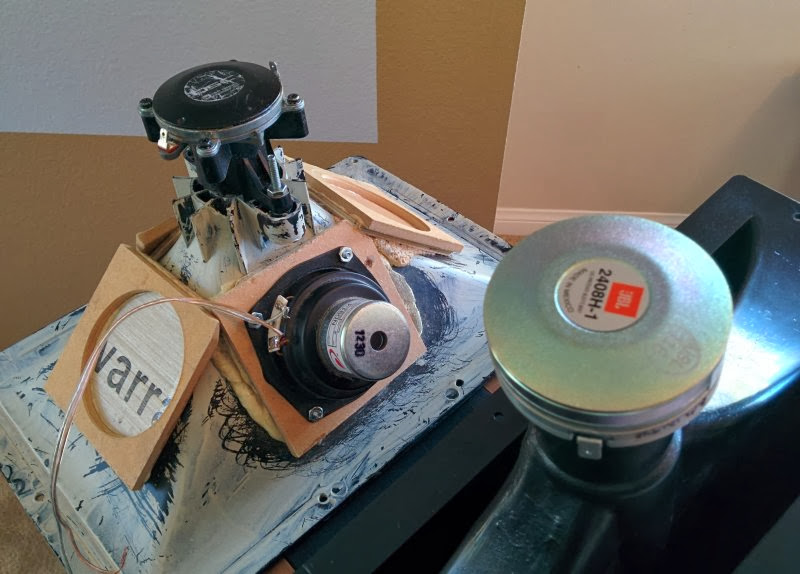
I tried a cone at the apex using a Faital 3FE20. Can't find the pics right now. It sounded ok but a compression driver sounded better. Measure the cumulative spectral delay and you'll see why the compression driver sounds better.
Not bad! And step?
You mean step response? How do you measure that in REW? I am wondering what to use to measure square waves ? Just use Audacity?
Not that Vifa didn't do well .....The 3FE22 (Nd) and 3FE25 (Ferrite) should be coming today.

Wonder TrueRTA will do has four licence levels starting with the free one. Link www.trueaudio.com.You mean step response? How do you measure that in REW? I am wondering what to use to measure square waves ? Just use Audacity?
Last edited:
You mean step response? How do you measure that in REW? I am wondering what to use to measure square waves ? Just use Audacity?
Export the impulse and one of us can produce the step in arta
- Home
- Loudspeakers
- Multi-Way
- Presenting the Trynergy - a full range tractrix synergy.
